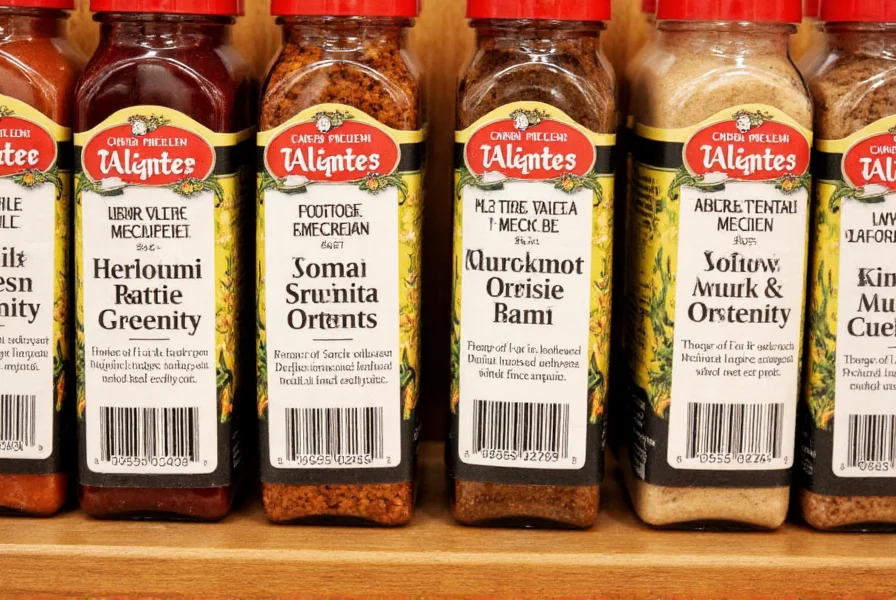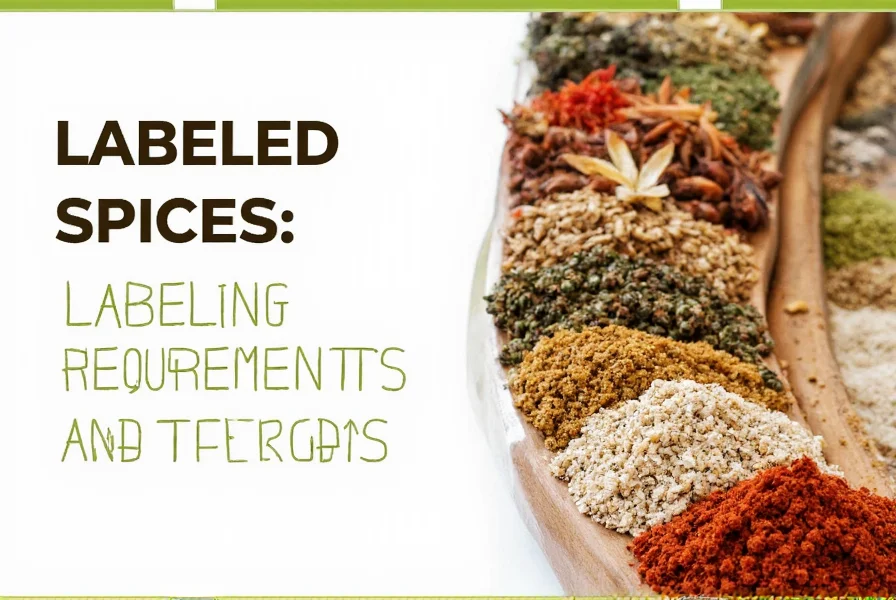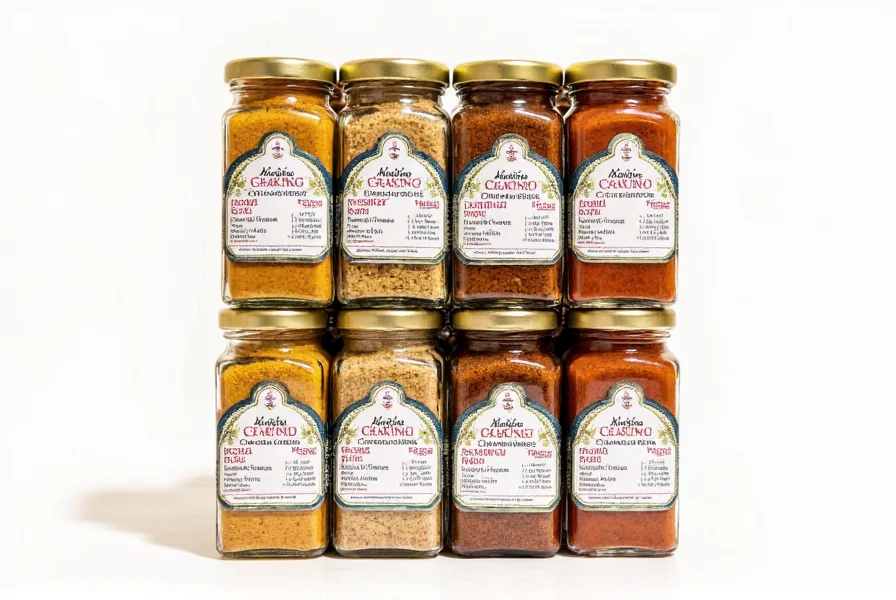Understanding proper spice labeling goes beyond simply attaching a name to a container. Whether you're a home cook managing your pantry or a business handling commercial spice distribution, accurate labeling serves critical functions in food safety, quality preservation, and regulatory compliance. This comprehensive guide explores the essential elements of effective spice labeling practices across different contexts.
Why Proper Spice Labeling Matters
Spice labeling serves multiple important purposes that impact both consumers and producers. Food safety represents the most critical concern, as proper labeling helps prevent allergic reactions by clearly identifying potential allergens. Many spices, particularly blends, may contain ingredients that trigger sensitivities in certain individuals. Without clear labeling, consumers cannot make informed choices about what they consume.
Quality preservation constitutes another significant benefit of proper spice labeling. Spices gradually lose potency over time, with most maintaining optimal flavor for 1-3 years depending on the variety. Labels with production or packaging dates help users track freshness and avoid using degraded products that compromise dish quality. The importance of expiration dates on spice labels cannot be overstated for maintaining culinary standards.

FDA Requirements for Commercial Spice Labeling
Businesses selling spices commercially must adhere to strict FDA labeling regulations. These requirements ensure consumers receive accurate information about the products they purchase. The FDA spice labeling requirements for commercial products include several mandatory elements:
| Label Element | Requirement Details | Exceptions |
|---|---|---|
| Statement of Identity | Clear name of spice or blend (e.g., "Ground Cumin" or "Taco Seasoning Blend") | None |
| Net Weight | Weight in both metric and US customary units | Small sample packages |
| Ingredient List | Descending order by weight; allergens highlighted | Single-ingredient spices |
| Name and Address | Manufacturer, packer, or distributor information | None |
| Nutrition Facts | Required for packages with claims or multiple ingredients | Single-ingredient spices in small containers |
These regulations fall under the broader category of commercial spice labeling regulations that protect consumers while providing clear guidelines for producers. Businesses must ensure their labeling complies with these standards to avoid regulatory action and maintain consumer trust.
Essential Elements of Home Spice Labeling
For home cooks and meal preppers, implementing a consistent spice container labeling system offers numerous benefits. While not subject to FDA regulations, home labeling practices should include several key elements:
- Spice name - Use precise terminology (e.g., "Ceylon Cinnamon" vs. "Cinnamon")
- Purchase or packaging date - Helps track freshness
- Expiration date - Based on typical shelf life for that specific spice
- Source information - Where you purchased or obtained the spice
- Special notes - Organic status, heat level for chilies, or other relevant details
When creating your home spice labeling guide, consider using waterproof labels and consistent formatting. Many home chefs find success with color-coded systems where different colors represent spice categories (e.g., red for chilies, yellow for turmeric-based blends). This visual organization makes spices easier to identify at a glance while cooking.
Avoiding Common Spice Labeling Mistakes
Both commercial producers and home users frequently make labeling errors that compromise safety and usability. The most common spice labeling mistakes to avoid include:
- Using vague terms like "spice mix" without ingredient details
- Omitting production or purchase dates
- Writing labels that fade or become unreadable over time
- Failing to update labels when repackaging spices
- Not accounting for potential cross-contamination in shared equipment
For those managing bulk spice labeling systems, additional challenges arise. Always label spices immediately after transferring them to new containers, and consider implementing a first-in-first-out (FIFO) system to ensure older spices get used before newer purchases.

Special Considerations for Allergen Labeling
Allergen awareness represents a critical component of modern spice labeling practices. While individual spices rarely contain common allergens, spice blends often include ingredients like celery seed, mustard, or sesame that trigger reactions in sensitive individuals. The importance of allergen labeling for spices has grown significantly as food allergy awareness increases.
Commercial producers must follow FDA guidelines for allergen declaration, which require:
- Clear identification of all major allergens in the ingredient list
- "May contain" statements when cross-contamination is possible
- Separate facility declarations for products made in shared spaces
Home users with allergy concerns should implement similar practices in their personal spice labeling system, noting potential cross-contamination risks from shared mills or storage containers.
Implementing an Effective Labeling System
Creating a sustainable spice labeling best practices system requires thoughtful planning. Consider these recommendations for both home and commercial contexts:
- Choose durable, waterproof labels that withstand kitchen conditions
- Standardize label placement on containers for quick identification
- Include both common and botanical names for precision (e.g., "Cinnamomum verum" for Ceylon cinnamon)
- Track purchase dates and establish replacement schedules based on spice type
- For commercial operations, maintain batch records for traceability
The most effective systems balance thoroughness with practicality. Overly complex spice container labeling methods often fail because they require too much maintenance. Start with essential information and expand as needed based on your specific requirements.
Frequently Asked Questions
What information must appear on commercial spice labels according to FDA regulations?
FDA regulations require commercial spice labels to include: the statement of identity (spice name), net weight in both metric and US customary units, ingredient list in descending order, manufacturer/distributor information, and nutrition facts for products making nutritional claims or containing multiple ingredients. Single-ingredient spices in small containers may be exempt from nutrition labeling.
How long should spices be kept after opening, and how should this be reflected on labels?
Most ground spices remain fresh for 1-2 years after opening, while whole spices last 3-4 years. Labels should include both the purchase/packaging date and a calculated expiration date based on the spice type. For example, "Purchased: 05/2023 | Best By: 05/2025" provides clear freshness guidance for proper spice container labeling.
Do homemade spice blends require allergen labeling?
While not legally required for personal use, including allergen information on homemade spice blend labels is strongly recommended for safety. If sharing or selling your blends, allergen labeling becomes essential. Clearly note ingredients like nuts, sesame, or mustard that commonly trigger reactions, following commercial spice labeling regulations as a guideline for thoroughness.
What's the best material for creating durable spice labels at home?
Waterproof vinyl sticker paper works best for home spice labeling, as it withstands moisture and oil exposure in kitchen environments. Alternatively, waterproof label makers or ceramic/metal containers with engraved labels provide long-lasting solutions. The key is ensuring your spice container labeling system remains readable throughout the product's shelf life.
How do I properly label spices when buying in bulk?
When labeling bulk spices, include the spice name, purchase date, source, and calculated expiration date. For commercial operations, add batch numbers for traceability. Home users should implement a first-in-first-out system and label both the original bulk container and any smaller containers used for daily access. Proper bulk spice labeling prevents waste and ensures freshness.











 浙公网安备
33010002000092号
浙公网安备
33010002000092号 浙B2-20120091-4
浙B2-20120091-4